Summer Birding Doesn't Suck!
It's All About the Babies
Summer. It’s gross!
What a steaming hot cesspool of a season. Three miserable months jammed between glorious, temperate spring and autumn. Summer is the time of year when everything seems hellbent on making us sweat and itch and want to sequester ourselves in climate-controlled comfort. Except for the truly masochistic among us who lean into the sticky suffering, rent a cabin at the lake, court the blackflies, and savor the sad dessert called a s’more, we lament summer’s onslaught and rejoice in the sweet, cooling balm of September.
And birding in summer? Boring! Honestly who’s going out in the 90+ heat to see a handful of common birds who seem equally miserable. I get it, American Robin. That warm birdbath water a Mourning Dove just took a dump in isn’t getting the job done.
Bring on the fall! Bring on migration!
But wait. Hold on. I’m here to tell you that summer birding is awesome too. The key is finding the extraordinary in the ordinary. All it takes is two easy steps!
Find a nest.
Watch the nest.
I was lucky to be able to closely observe two bird nests last summer. Carolina Wrens nested for a second straight year in the hanging flower basket on our front porch.
Then there was the Louisiana Waterthrush nest I found while hiking the Rachel Carson Trail. That find felt particularly fortuitous, considering how hidden the nest was in the craggy rock walls of Pine Creek.
Our family’s summer travel made it impossible to monitor the nests daily. Happily, all the babies waited until we were back home before fledging.
What a sweet summer treat that was, and I was ready for more. This year, three new hanging flower pots were ready to welcome some nesting Carolina Wrens. Meanwhile, down along Pine Creek, several pairs of Louisiana Waterthrushes were singing and seemingly in the mood for some babymaking.
The stage was set, but birds have a way of doing what we expect them to—until they don’t. And this year they didn’t. I did find another waterthrush nest, but the timing was off. We were out of town when the babies hatched and fledged.
And there was nesting activity on the front porch, but in place of Carolina Wrens we had House Finches! No complaints there. I don’t mind mixing things up a bit, and I’d never had the privilege of observing a family of House Finches before. They didn’t disappoint! You can watch the whole saga—and a saga it was—unfold right here.
Pine Creek also flipped the script this year. While Acadian Flycatchers are an annual fixture along the Rachel Carson Trail, I’d never tracked a nest down before, until this year, when a breeding pair led me to this messy clump in the branch of a black maple.
Acadian Flycatcher nests are not architectural masterpieces. They look crude and sloppily formed. They’re also shallow and often so loosely woven that you can see straight through them (perhaps their unwelcoming appearance is an evolved defense against cowbird parasitism?). So inconspicuous and unimpressive was this nest that I often had trouble relocating it, but when I did, I was richly rewarded.
Here’s the female incubating the eggs. Acadian Flycatchers lay between 2-4 per cycle.
My observations were interrupted by our annual trip to New York. Given that the incubation period is roughly two weeks, and that it takes the chicks another two weeks to fledge after hatching, I was confident I wouldn’t miss the Acadian babies.
My calculations proved correct. Not only was the occupied nest waiting when we returned, a pink bill could be seen jutting above the lip of the cup—a hatchling!
It didn’t take long to realize that there was only one baby in this clutch. The nest was too high to see into. I can’t say how many eggs were laid. Had something happened to the others? Did Brown-headed Cowbirds attempt to do cowbird things? Was the local Blue Jay population feeling peckish? Hard to say, but I was determined to keep an eye on this hatchling and hope it could avoid its own dark end.
It was maybe a week later that I found a feathery blob out of the nest and perched on the branch.
The next day, the fledgling was getting more adventurous. And more conspicuous. The observant birder will notice something here that I only noticed when writing up this post and taking a closer look at my photos.
Look at that thick bill. Not the bill of an Acadian Flycatcher—it indeed belongs to a Brown-headed Cowbird. Thus we can surmise the fate of the flycatcher eggs. They were no doubt jettisoned from the nest, and the flycatcher parents were compelled to raise this Cowbird baby as their own. So much for my theory on Acadian Flycatcher nests being inhospitable to Cowbirds.
On the third day I was unable to find the baby bird. I was certain it had fully fledged and was ready to fly, but one of the foster parents gave away its position, near the trunk of its tree, trying to blend in.
The next day, no matter how I searched, I couldn’t find the fledgling, who was now truly out in the world, not as an Acadian Flycatcher, but a full-blown Brown-headed Cowbird.
I know this post seemingly took a dark turn (a Jane Austen novel turned to Emily Brontë, Alex commented), but I encourage you to remember that cowbirds and the birds they parasitize evolved together. Brood parasitism is natural and normal, no matter how brutal it seems, and human intervention can have worse consequences for the host birds. Interested in learning more about brood parasitism in birds? I encourage you to listen to my podcast episode with cowbird champion Dr. SK Winnicki. Particularly fascinating is how baby cowbirds figure out they are cowbirds, even after being reared by a different species.
Summer birding doesn’t have to be a drag if you make it about the babies. Take a look around your yard in June and July and you just might notice it full of particularly spotty Robins, disheveled Downy Woodpeckers, hangry House Finches, and ugly Acadian Flycatchers Brown-headed Cowbirds. So refresh the water in the birdbath and welcome them to the world. Things are rough out there for a baby bird, even in the best of times.
I don’t want to end on a downer, but here’s a reminder that songbird populations are on the decline—yes, even among cowbirds. There are many reasons for the downward trend, some very solvable (keep your cat indoors!), some perhaps intractable for the foreseeable future (climate change). But plenty of birds are out there still, so there’s no reason for birders to suffer through the summertime blues. For a cure, look no further than your yard. If it seems particularly popping with bird life, that’s because the population has likely doubled or tripled in size. That’s reason to celebrate.
New Content!
Can’t get enough of Birding with BillBow? You’re in luck! In true birdlike fashion, I’m taking in the natural world, digesting what I see, hear, smell, and touch, and regurgitating it just for you! So open wide and check out the video shorts I’ve been making, mostly about the wildlife I encounter in our very own yard. While you’re at it, don’t forget to follow, subscribe, like, share… you know the drill.
Featured Photo—Acadian Flycatcher
The Audubon app describes an Acadian Flycatcher’s nest as “Usually suspended within the horizontal fork of branch well out from trunk.” Here again, birds do what you expect—until they don’t. Pine Creek separated me from this second Acadian nest I found, but I was able to zoom close enough to see that this nest wasn’t built into a horizontal branch but rather constructed within some overhanging Allegheny blackberry. Precarious is how I would describe it, but the nest held, and the parents fledged at least one chick. Cowbird chick? Don’t know.
Featured Video—Pileated Woodpeckers
This is what I’m talking about! No Brown-headed Cowbirds here, just an adult male Pileated Woodpecker feeding its young in the back yard.
That’s all for this time. What are your feelings about summer birding and summer in general? Have you been able to observe nesting birds at home or in your patch? Were the nests successful? Were they parasitized? Tell me all about it down below!👇
Until next week, thanks for reading, and try not to sweat your ass off!
nwb
Birding with BillBow’s weekly content will always be free, but you can help pay the bills in the form of a paid subscription (save $10/year by choosing the yearly plan!). As always, 5% of earnings donated to the American Birding Association.
Enjoying my content but not feeling up for an annual subscription? Consider buying me a beer instead. Holy hell is it muggy today.
Things are tough out there. If a financial commitment isn’t possible, I’d be so grateful if you shared my post!
This post was human generated. All media by Nathaniel Bowler. Developmental edits by Alexandra Hidalgo.


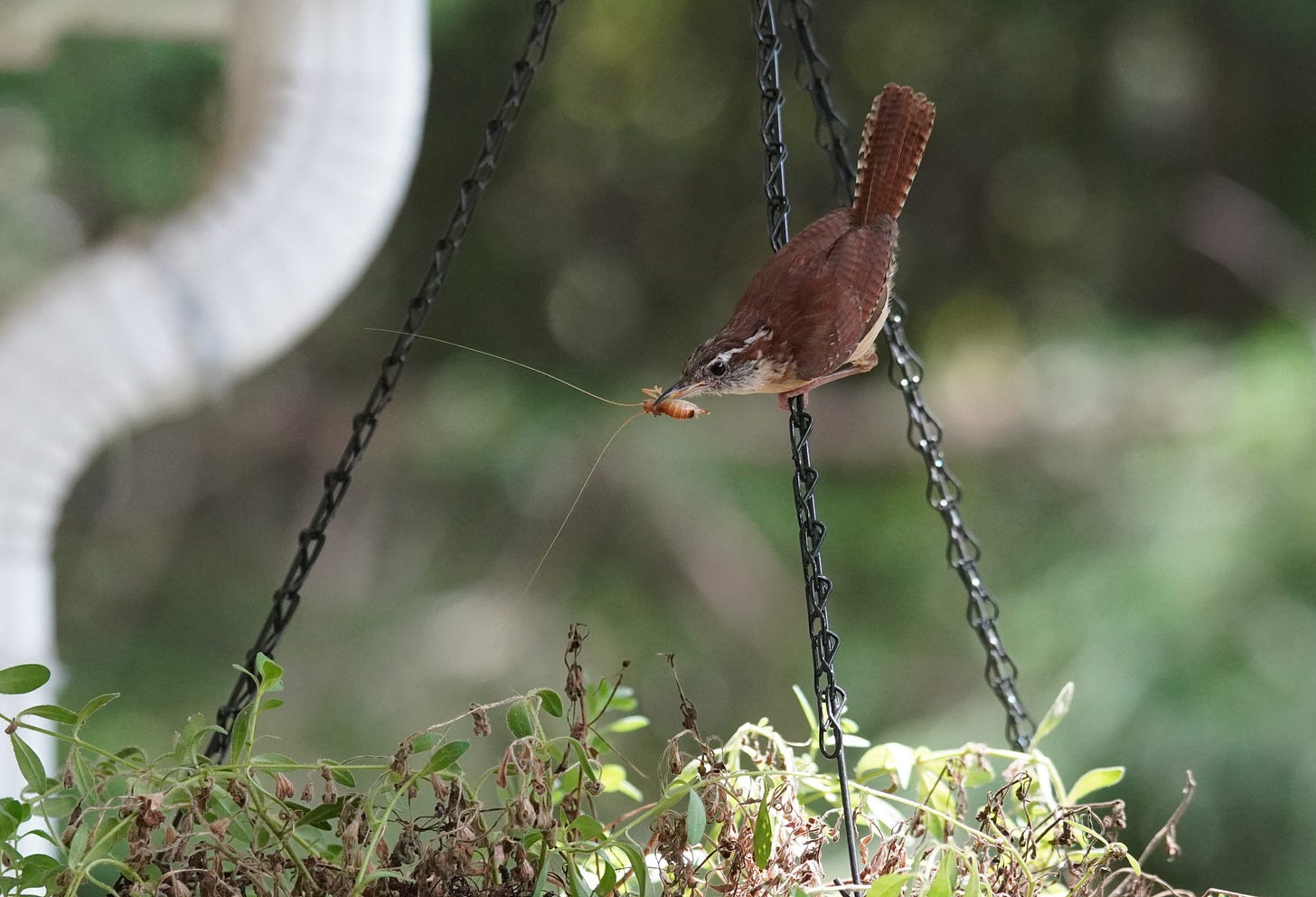
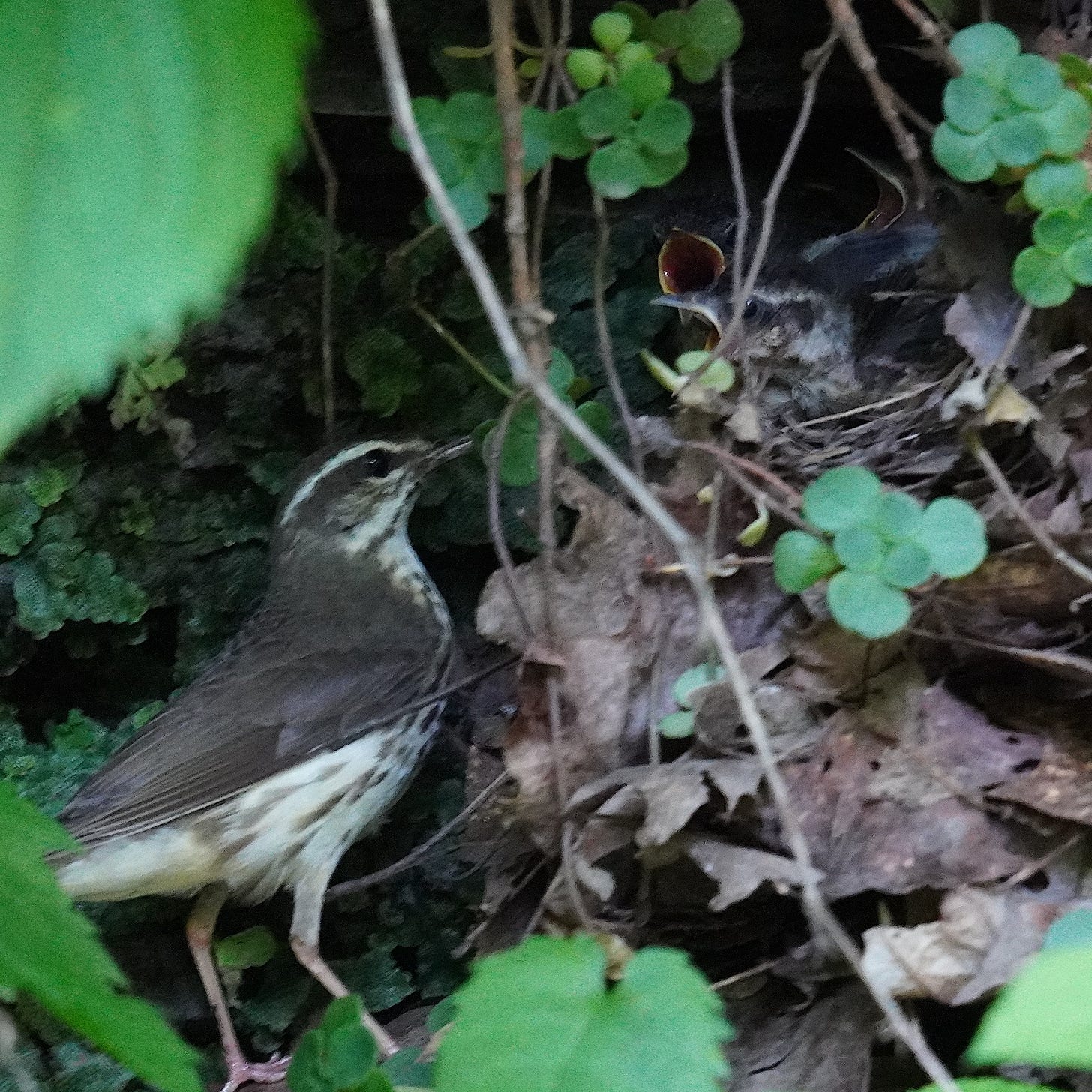
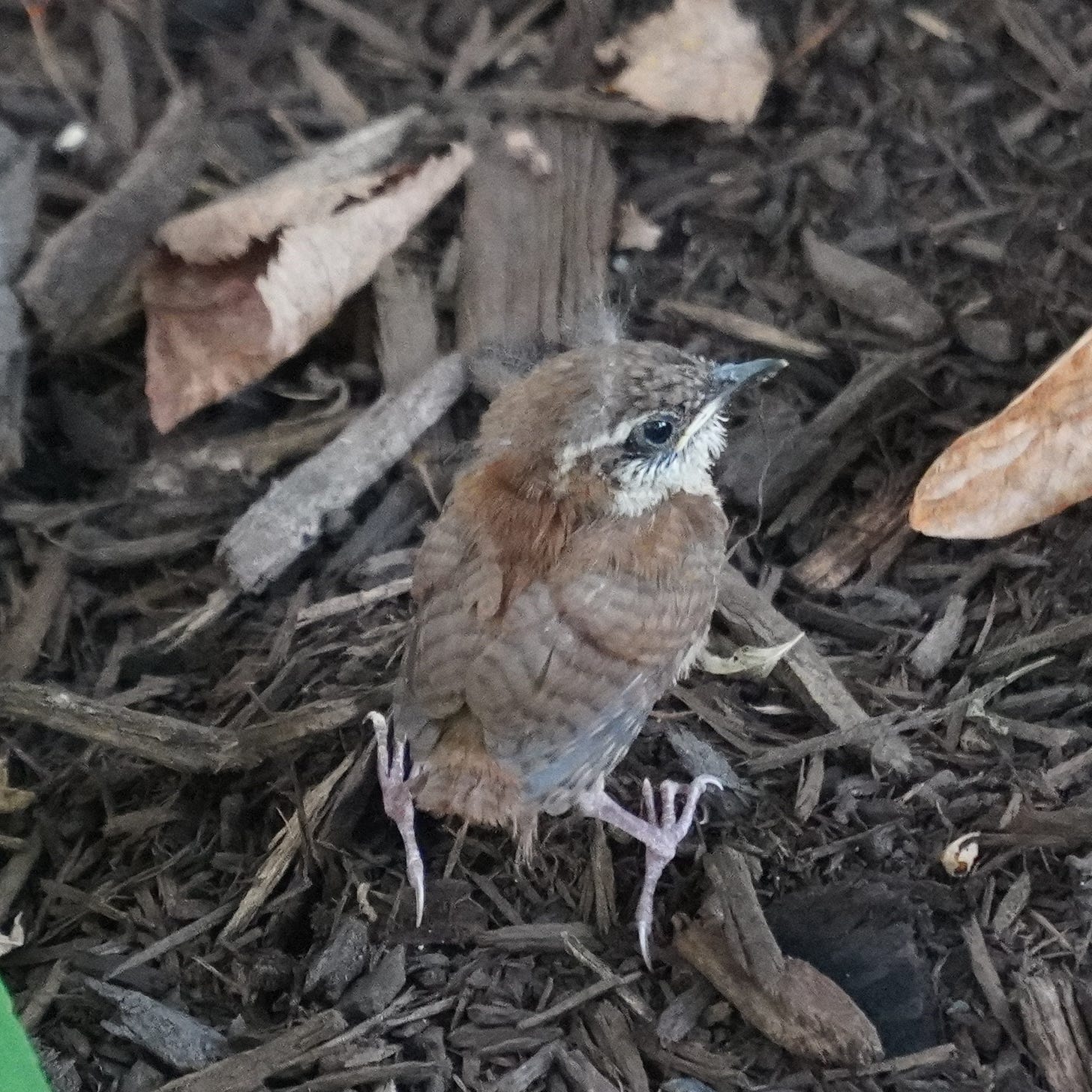
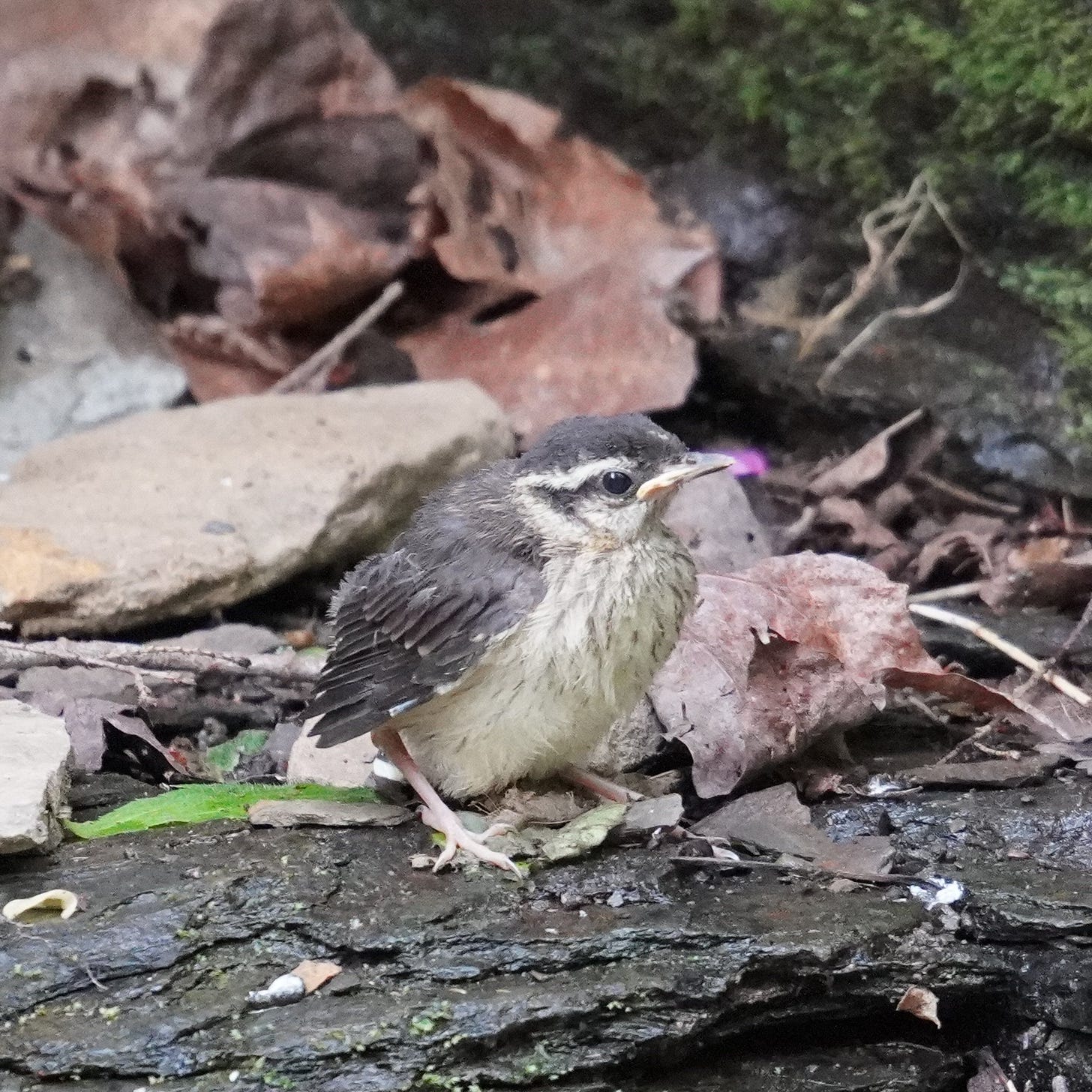
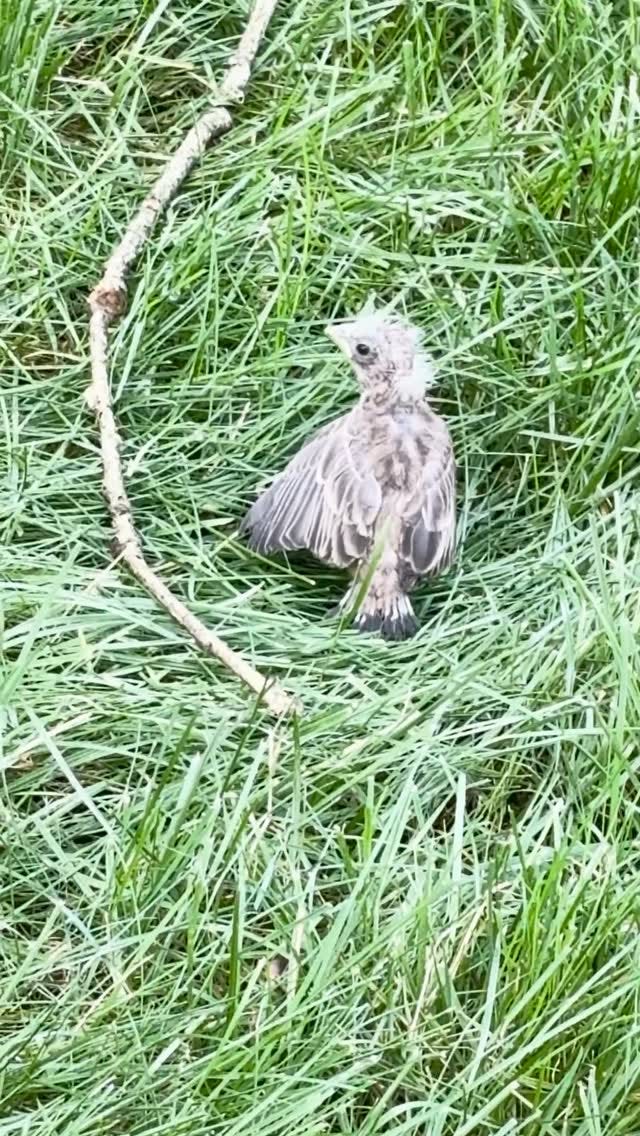
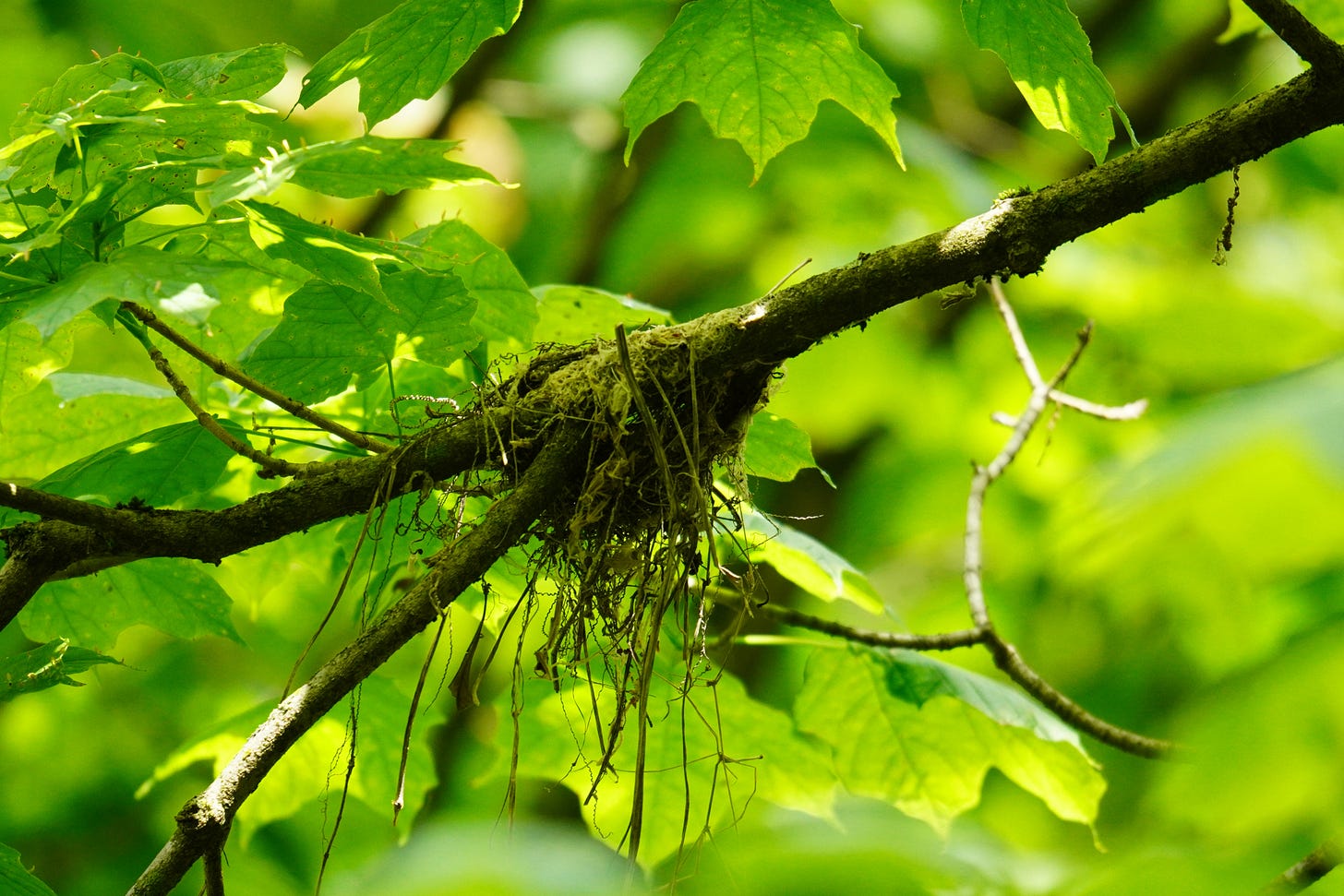
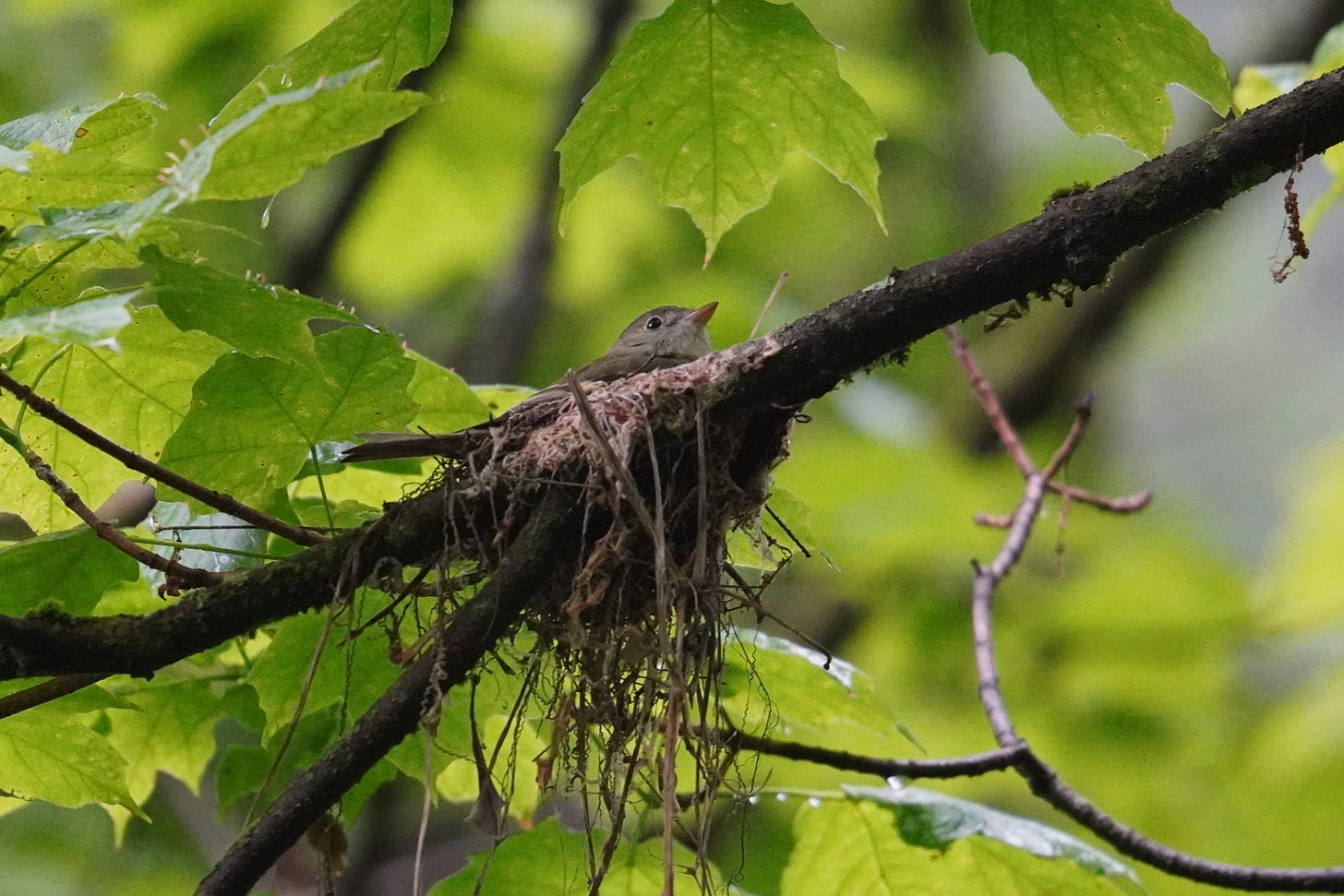
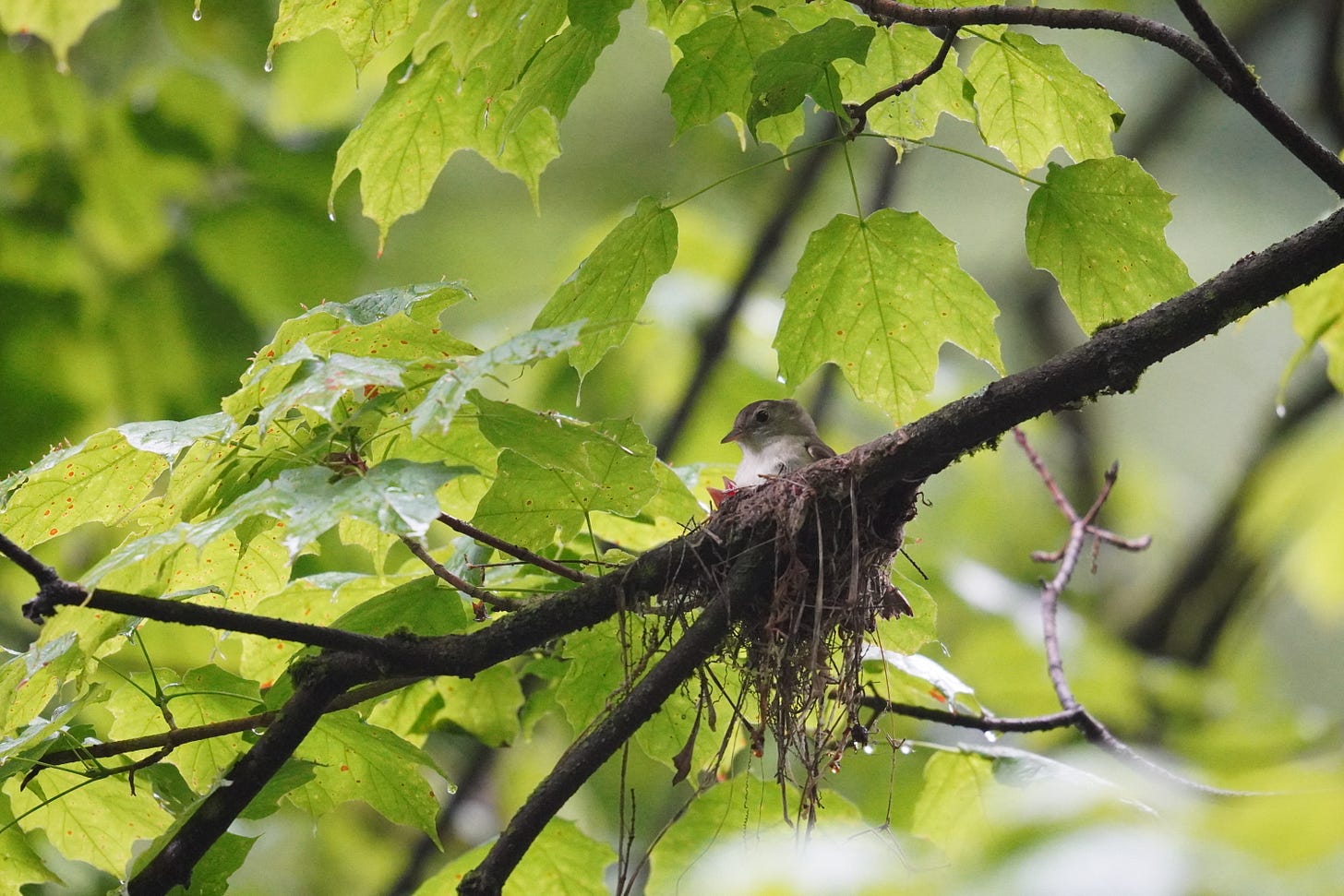
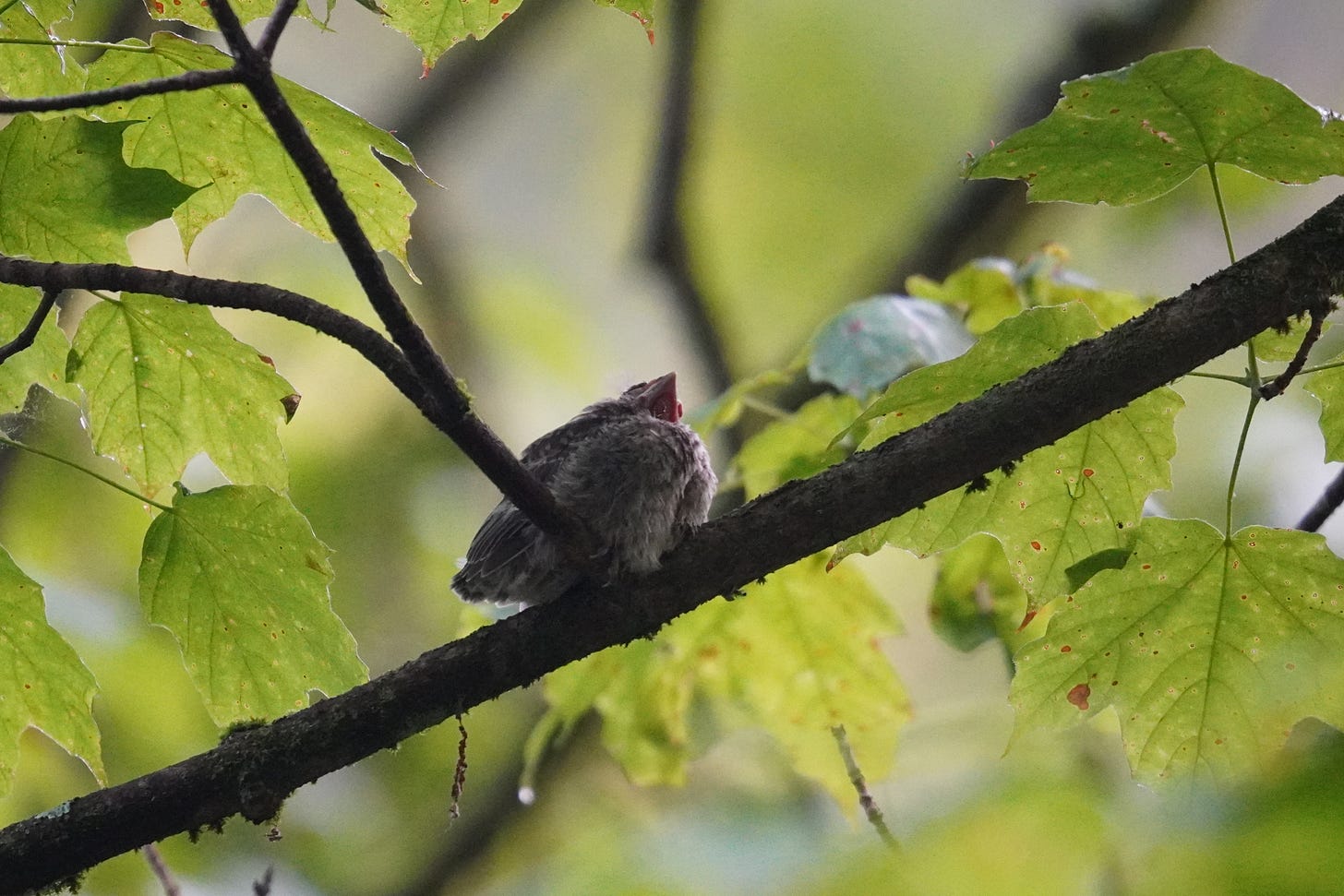

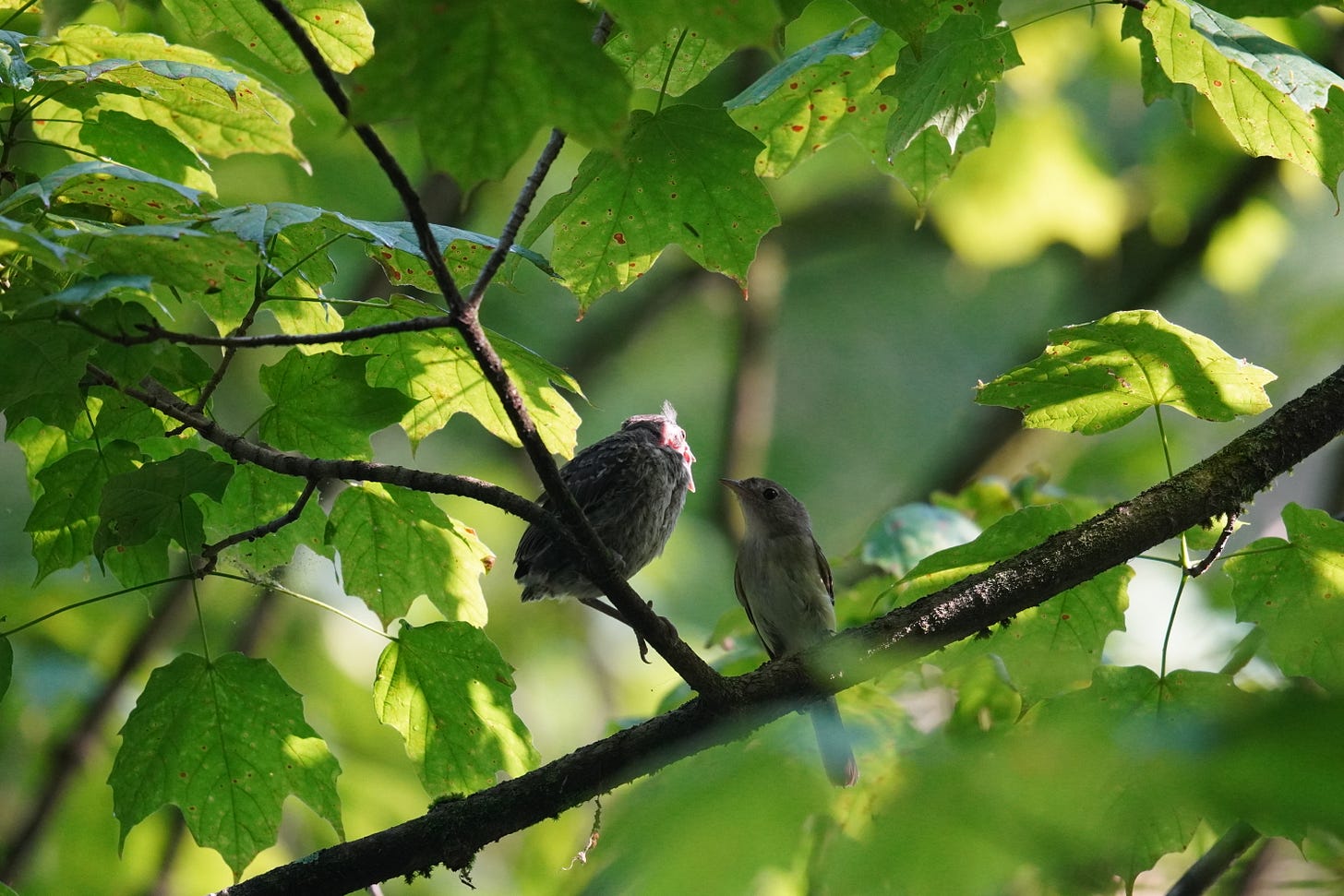
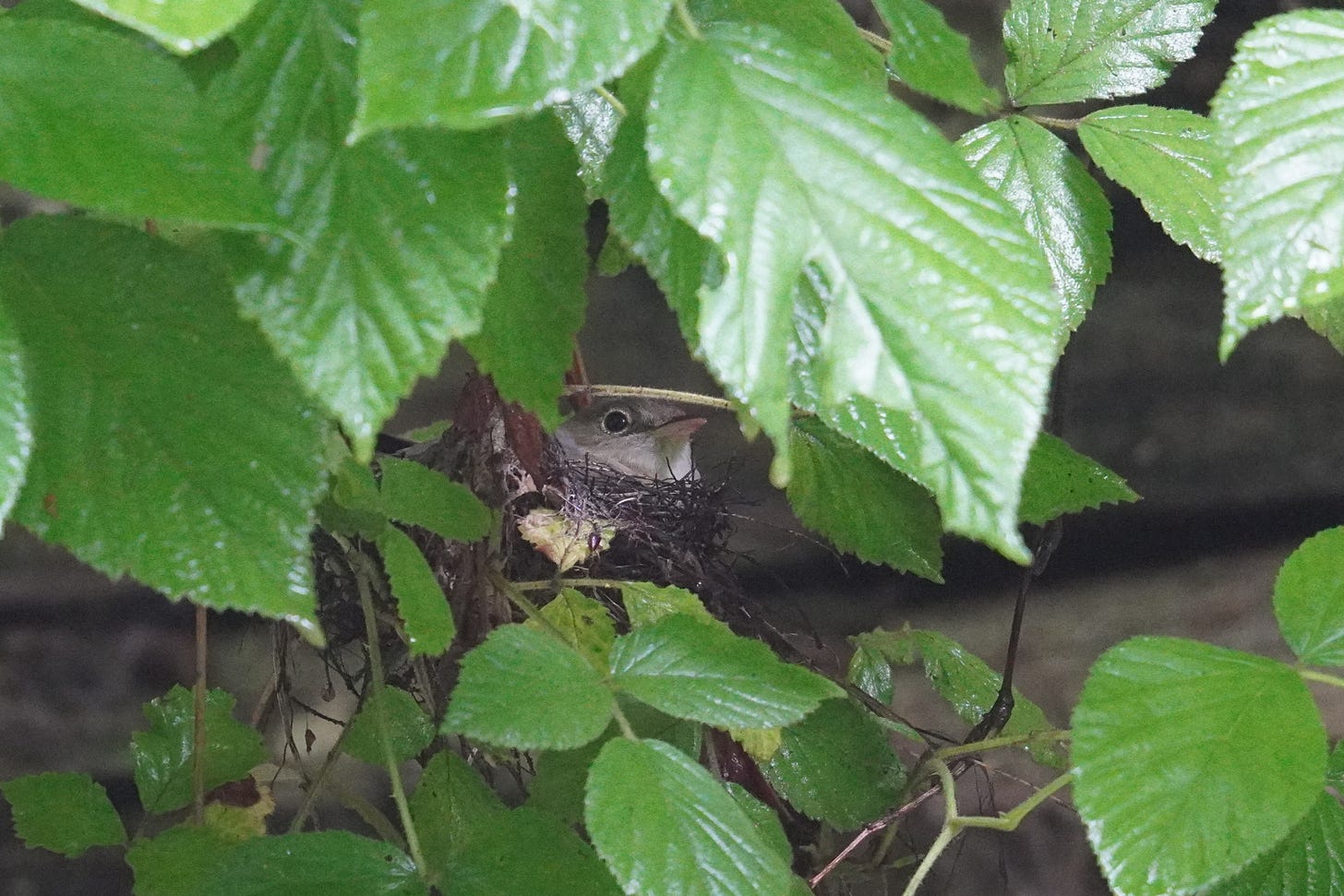
Thank you for being a champion of summertime birding, Nate! It definitely has it's merits. And thank you especially for sharing that picture of the Louisiana Waterthrush fledgling--absolutely adorable.
I just got my first glimpse this season of baby Grasshopper Sparrows and Dickcissels on Saturday. They definitely made trudging around in the heat and humidity totally worthwhile.
I focus on bugs (mostly) during the summer, and some of the special summer flowers, but this reminded me that at lot of my early birding took place in the summer of 2020 — that's when I got my first pair of binoculars. It was all new and exciting to me — summer and scarlet tanagers on my hikes, wood thrushes singing, the time a hooded warbler landed so close to me on a trail that I was able to take decent photos with my cell phone, the first time I watched a great egret take off through my binoculars. And even now, goldfinches on flowers and hummingbirds just being present, great crested flycatchers shrieking, these are all great things about summer birding!